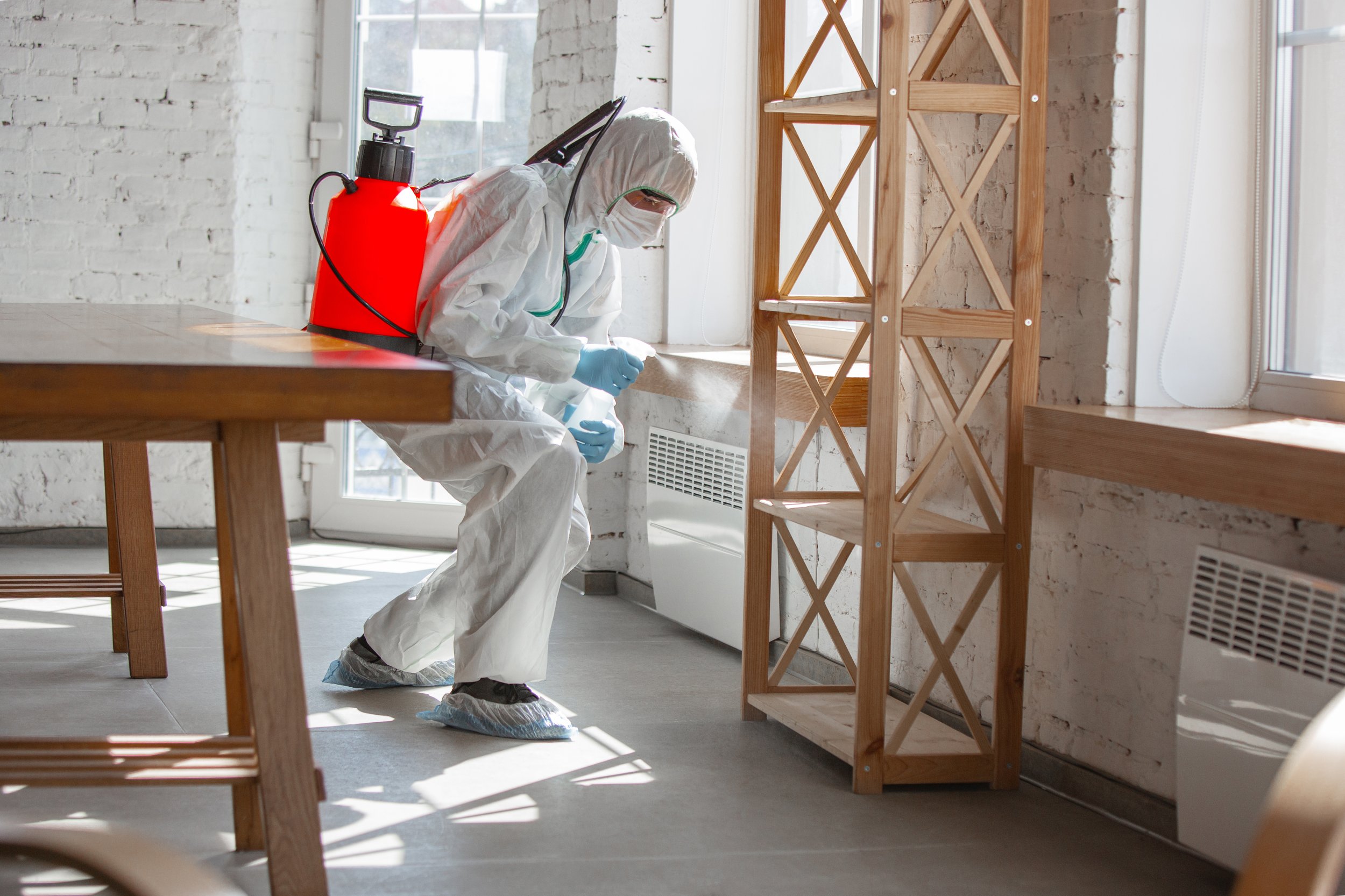
- Mold infestation can have serious health consequences and damage the structural integrity of a building.
- Signs of mold infestation include visible mold growth, musty smells, water stains, peeling paint, condensation, and increased allergy symptoms.
- Choose a licensed and certified mold remediation company with experience, expertise, and liability insurance.
- Reading customer reviews and testimonials can help gauge the reputation and reliability of a mold remediation company.
- The mold remediation process involves initial assessment, containment, removal, sanitization, and inspection of HVAC systems.
- To prevent future mold infestations, maintain optimal indoor humidity levels, regularly inspect and maintain plumbing systems, and ensure proper ventilation and air circulation.
Table of Contents
Understanding Mold Infestation
Mold infestation is a common problem that homeowners face, and it can have serious consequences for both the health of individuals living in the affected property and the structural integrity of the building. Mold is a type of fungus that thrives in damp and humid conditions, and it is often found in areas such as bathrooms, basements, and kitchens. It can spread quickly and release spores into the air, which can then be inhaled, leading to respiratory issues and allergies.
The Dangers of Mold in Your Home
Mold can pose significant health risks, especially to individuals with asthma, allergies, or compromised immune systems. Exposure to mold spores can cause symptoms such as coughing, sneezing, wheezing, throat irritation, and skin rashes. Prolonged exposure to mold can even lead to more severe health problems, including respiratory infections and lung damage.
In addition to health risks, mold infestation can also cause damage to your home. Mold can eat away at organic materials such as wood and drywall, weakening the structural integrity of the building. It can also cause discoloration and unpleasant odors, making the affected areas unsightly and unpleasant to be in.
Identifying Early Signs of Mold Infestation
Early detection of mold infestation is crucial to prevent further damage and health risks. Here are some signs that may indicate the presence of mold in your home:
- Visible mold growth on walls, ceilings, or other surfaces.
- A musty or earthy smell in certain areas of your home.
- Water stains or discoloration on walls or ceilings.
- Peeling or bubbling paint or wallpaper.
- Excessive condensation on windows or other surfaces.
- Increased allergy symptoms or respiratory issues in individuals living in the house.
If you notice any of these signs, it is important to take immediate action to prevent the mold from spreading and causing further damage.
Choosing the Right Mold Remediation Company
When it comes to mold remediation north forth worth, it is essential to hire a professional and reputable company to ensure effective and safe removal of the mold. Here are some factors to consider when choosing a mold remediation company:
Factors to Consider When Hiring a Mold Remediation Company
- Experience and Expertise: Look for a company that has extensive experience in dealing with mold remediation. A company with a proven track record is more likely to provide effective solutions and address the root cause of the mold infestation.
- Certification and Licensing: Ensure that the company is properly certified and licensed to perform mold remediation services. This ensures that they meet industry standards and have the necessary skills and qualifications.
- Insurance Coverage: Verify that the company has liability insurance to protect you from any damages that may occur during the remediation process. This provides you with peace of mind and financial protection.
The Importance of Proper Licensing and Certification
Hiring a licensed and certified mold remediation company is crucial for several reasons. Firstly, it ensures that the company has undergone the necessary training and has the knowledge and skills to handle mold infestations effectively. They are familiar with the proper techniques and procedures required for safe mold removal. Additionally, licensed companies are required to adhere to certain regulations and guidelines, ensuring that the work is performed to a high standard.
Furthermore, proper licensing and certification indicate that the company is committed to ongoing education and staying up-to-date with the latest advancements in mold remediation techniques. This ensures that they can provide the most effective and efficient solutions for their clients.
Reading Customer Reviews and Testimonials
One of the best ways to gauge the reputation and reliability of a mold remediation company is by reading customer reviews and testimonials. Take the time to research and read about the experiences of past clients. Look for companies that have consistently positive reviews and testimonials, as this indicates their commitment to customer satisfaction and providing high-quality services.
Pay attention to specific details mentioned in the reviews, such as the effectiveness of the mold removal, the professionalism of the technicians, and the overall customer experience. This will give you a good idea of what to expect from the company and help you make an informed decision.
The Mold Remediation Process Explained
The mold remediation process involves several steps to effectively identify, contain, remove, and prevent the recurrence of mold. Here is a breakdown of the typical mold remediation process:
Initial Mold Assessment and Inspection
The first step in the mold remediation process is to conduct a thorough assessment and inspection of the affected areas. A mold remediation professional will inspect the property to identify the source of the mold, assess the extent of the infestation, and determine the appropriate course of action.
During the inspection, the technician will carefully examine the visible signs of mold growth, as well as use specialized equipment such as moisture meters and thermal imaging cameras to detect hidden mold behind walls or under flooring.
Implementing Effective Mold Removal Strategies
Once the assessment is complete, the mold remediation company will develop a customized plan to remove the mold from your property. This plan may involve a combination of techniques, such as:
- Containment: The affected areas will be isolated to prevent the spread of mold spores to other parts of the property. This may involve the use of physical barriers and negative air pressure to create a controlled environment.
- Removal: The mold will be carefully and safely removed from surfaces using appropriate cleaning agents, tools, and techniques. It is crucial to ensure that the mold is completely removed to prevent regrowth.
- Sanitization: After the mold removal, the affected areas will be thoroughly cleaned and sanitized to eliminate any remaining mold spores and prevent future infestations.
Assessing the HVAC System for Mold Contamination
In addition to treating the visible mold growth, it is important to assess the HVAC (heating, ventilation, and air conditioning) system for mold contamination. Mold spores can easily spread through the air ducts, leading to reinfestation. A mold remediation company will inspect and clean the HVAC system as part of the remediation process to ensure that it is free from mold and functioning properly.
Preventing Future Mold Infestations
While mold remediation is essential to eliminate existing mold, it is equally important to take preventive measures to avoid future infestations. Here are some strategies to prevent mold growth in your home:
Maintaining Optimal Indoor Humidity Levels
Mold thrives in humid environments, so it is crucial to keep the indoor humidity levels in check. The optimal humidity level is between 30% and 50%. Use dehumidifiers in areas prone to moisture, such as basements and bathrooms. Ensure proper ventilation and good air circulation throughout your home to minimize excessive moisture.
Regular Inspection and Maintenance of Plumbing Systems
Leaky pipes and plumbing issues can contribute to the growth of mold. Regularly inspect your plumbing system for any leaks or damage and address them promptly. Fixing plumbing issues and ensuring proper drainage can help prevent water accumulation and subsequent mold growth.
Proper Ventilation and Air Circulation in Your Home
Inadequate ventilation can trap excess moisture, leading to favorable conditions for mold growth. Ensure proper ventilation in areas prone to moisture, such as bathrooms and kitchens. Use exhaust fans and open windows when necessary to improve air circulation and promote drying.
By following these preventative measures and addressing any moisture issues promptly, you can significantly reduce the risk of future mold infestations in your home.
In conclusion, mold infestation is a serious issue that requires immediate attention. Understanding the dangers of mold, choosing the right mold remediation company, and implementing effective mold removal strategies are crucial steps in ensuring a mold-free and healthy home. By taking preventive measures and maintaining optimal conditions, you can minimize the risk of future mold growth. If you suspect mold infestation in your home, it is advisable to consult with a professional mold remediation company to assess the situation and provide appropriate solutions.
FAQ
Question: What are the health risks associated with mold infestation? – Exposure to mold spores can cause symptoms such as coughing, sneezing, wheezing, throat irritation, and skin rashes. Prolonged exposure to mold can even lead to more severe health problems, including respiratory infections and lung damage.
Question: How can I identify early signs of mold infestation in my home? – Signs of mold infestation include visible mold growth on walls, ceilings, or other surfaces, a musty or earthy smell in certain areas of your home, water stains or discoloration on walls or ceilings, peeling or bubbling paint or wallpaper, excessive condensation on windows or other surfaces, and increased allergy symptoms or respiratory issues in individuals living in the house.
Question: What factors should I consider when hiring a mold remediation company? – Factors to consider when choosing a mold remediation company include their experience and expertise in dealing with mold remediation, certification and licensing to ensure they meet industry standards, and liability insurance to protect you from any damages that may occur during the remediation process.
Question: Why is proper licensing and certification important in a mold remediation company? – Hiring a licensed and certified mold remediation company ensures that they have undergone the necessary training and have the knowledge and skills to handle mold infestations effectively. It also indicates that they are committed to ongoing education and staying up-to-date with the latest advancements in mold remediation techniques.
Question: What is the mold remediation process? – The mold remediation process involves initial assessment and inspection of the affected areas, implementing effective mold removal strategies such as containment, removal, and sanitization, and assessing the HVAC system for mold contamination.
Question: How can I prevent future mold infestations in my home? – To prevent future mold infestations, maintain optimal indoor humidity levels between 30% and 50%, regularly inspect and maintain plumbing systems for leaks or damage, and ensure proper ventilation and air circulation throughout your home.
Question: How does mold affect the structural integrity of a building? – Mold can eat away at organic materials such as wood and drywall, weakening the structural integrity of the building.
Question: What is the importance of reading customer reviews and testimonials when choosing a mold remediation company? – Reading customer reviews and testimonials can help gauge the reputation and reliability of a mold remediation company. It provides insights into the effectiveness of their mold removal, the professionalism of their technicians, and the overall customer experience.
Useful Resources:
- https://www.epa.gov/ – Website of the Environmental Protection Agency with information on mold, its health effects, and remediation guidelines.
- https://www.cdc.gov/ – Centers for Disease Control and Prevention’s FAQ on mold and its health risks.
- https://www.aiha.org/ – The American Industrial Hygiene Association provides resources and information on mold remediation and indoor air quality.
- https://www.iaqa.org/ – The Indoor Air Quality Association offers education and resources on indoor air quality and mold remediation.
- https://www.iicrc.org/ – The Institute of Inspection, Cleaning and Restoration Certification is a standard-setting organization for the inspection, cleaning, and restoration industries, including mold remediation.
- https://www.nachi.org/ – The International Association of Certified Home Inspectors provides resources and education for home inspectors, including information on mold.
- https://www.aihagulfcoast.org/ – The Gulf Coast Chapter of the American Industrial Hygiene Association offers local resources and information on mold remediation in the Gulf Coast area.
- https://www.epa.gov/ – EPA’s guide to mold remediation in schools and commercial buildings, providing comprehensive information and strategies for dealing with mold issues in larger structures.









